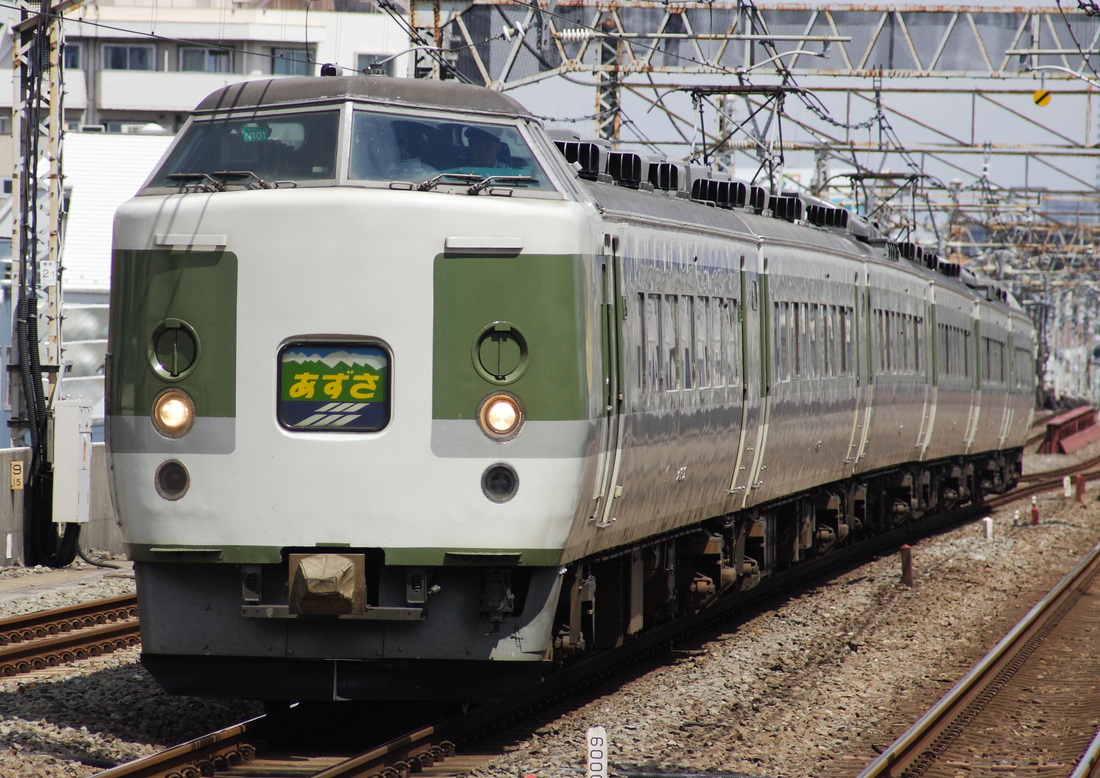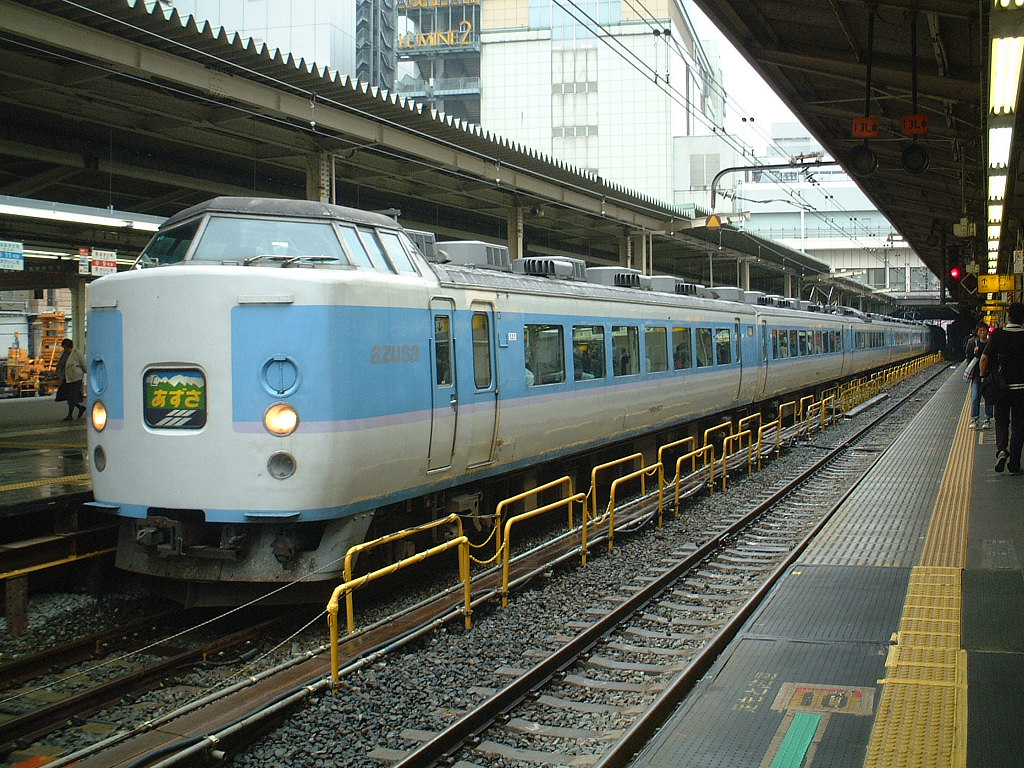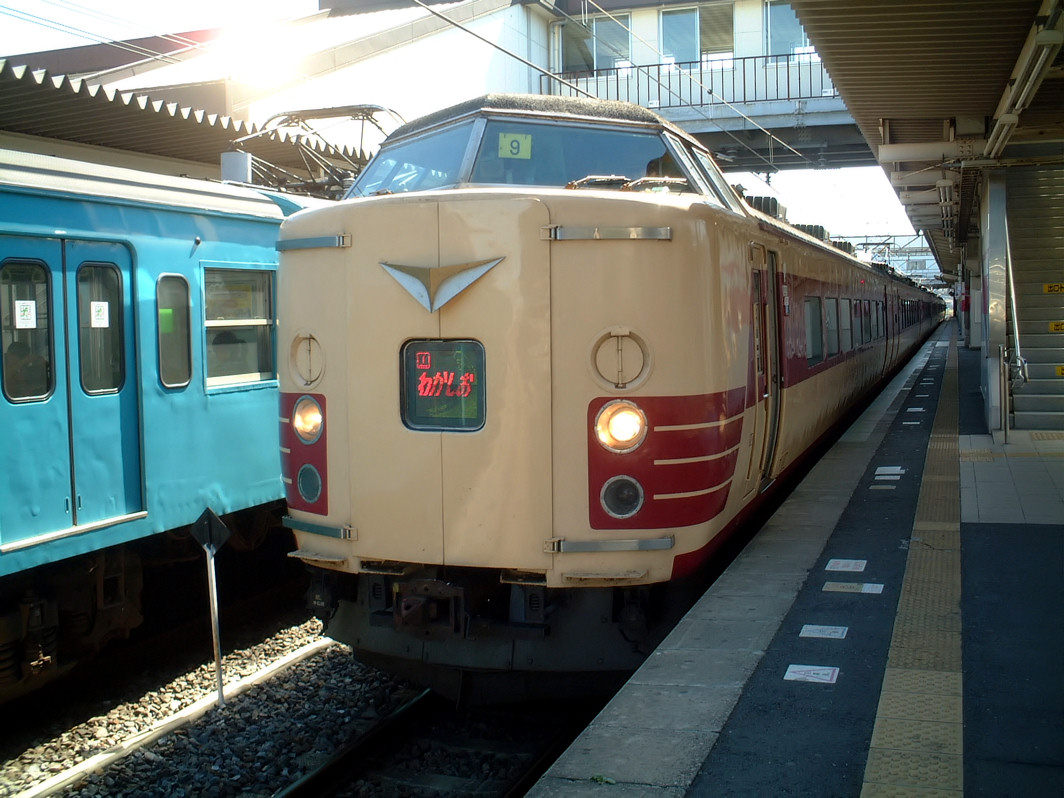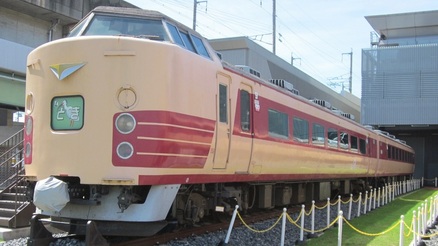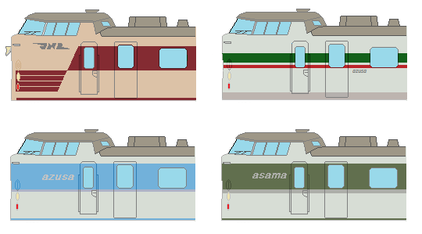|
|
JNR 183/189 SeriesMainly operated as the Myoko-Gou and Ohayo Liner on the Shinetsu Main line and as the Azusa Limited Express on the Chuo Main Line
In Service: 1972 - Present (183 Series) 1975 - Present (189 Series) Top Speed: 120km/h Length: 21000 mm (End cars) 20500 mm (Middle cars) Width: 2946mm Consist/Formation: 4 motorized cars + 2 trailer cars (6 cars) 6 motorized cars + 3 trailer cars (9 cars) 8 motorized cars + 2 trailer cars (10 cars) 8 motorized cars + 3 trailer cars (11 cars) 8 motorized cars + 4 trailer cars (12 cars) Electric System: 1500v DC through overhead wires Control: Resistance Gauge: 1067mm (Narrow) Number built: 353 cars (Series 183) 155 cars (Series 189) The 183 Series was developed by the Japanese National Railways (JNR) in the early 1970's to become the workhorse of their fleet in the Chiba area. The body design is similar to the 581/583 Series train developed by the JNR in the 1960's with an elevated cab and walk-through doors at the front. These trains are known as the 0 numbers. This style soon became the standard of JNR express trains and it continues to live on in designs such as the E351 Series and 287 Series. Later production models known as the 1000 numbers got rid of the walk-through doors at the front but the design was kept the same. These trains were designed for the Joetesu Line and were better equipped for cold climates. Nine 1000 number front cars received Automatic Train Control (ATC) equipment and were renumbered as the 1500 numbers. Six front cars were also built new as 1500 numbers. The 189 Series is nearly identical in appearance to the 183 Series but is equipped to co-operate with electric locomotives to help it get over the Usui pass in Nagano prefecture, previously one of the toughest climbs in Japan. This equipment allowed for trains up to 12 cars long to make it over the pass. These trains were operated as limited expresses such as the Azusa (Shinjuku-Matsumoto), Asama (Tokyo-Nagano) and Sazanami (Tokyo-Tateyama). After the formation of the Japan Railway Company (JR) in 1987, all 183 Series trains owned by the JNR were given to JR East. During the late 80s and early 90s, JR East updated many of the trains in its fleet. The interiors were redone and they were also given a new paint scheme. The JNR ornaments on the front of the train were removed. JR West also owns 183 Series trains but these are 485/489 Series AC/DC trains with the AC equipment removed after the formation of JR West. As of 2012, these trains can be seen as rapid trains run outside of Tokyo or as seasonal trains run during the holidays. Did you know? The elevated cab design adopted by the 183 Series and many other JNR expresses is sometimes referred to as "Denki Gama" meaning electric rice cooker due to its similarity in appearance to one. |

